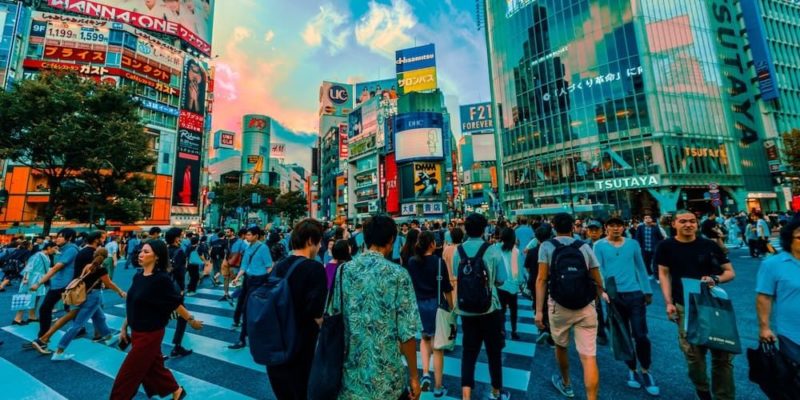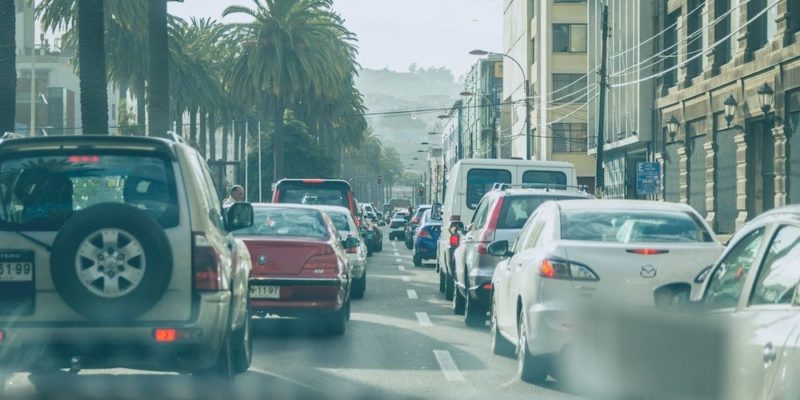We explain what the urban population is, its history, its characteristics and its common problems. Furthermore, the differences with the rural population.

What is the urban population?
The urban population is the one who lives in the cities. Urban areas are characterized by their high number and density of population, unlike rural areas, where people live in small towns or dispersedly.
The reasons why the urban population chooses to live in cities are multiple, among them, the greater job opportunities, better access to basic services greater cultural offering and diversity, and better and more varied access to education and health.
Today, the world's population is 8 billion, and it is estimated that more than half (approximately 56%) live in urban areas.
Characteristics of the urban population
The main characteristics of the urban population are:
- It is the one who lives in the cities.
- It represents the majority of the world's population (4.4 billion people).
- It has a greater offer of employment and services such as electricity, drinking water or natural gas.
- It is estimated that it will reach 8 billion people by 2100.
- Its main problems are exposure to environmental pollution, mobility and traffic, and access to decent housing.
Differences between urban population and rural population

Unlike the urban population, who live in cities, the rural population lives in the countryside. Rural areas are characterized by having few means of transportation (there is usually not much supply of buses, trains or taxis) and little availability of services (such as electricity, gas or drinking water).
The majority of the rural population carries out their work in the primary sector, which involves the extraction of raw materials through agriculture, mining or livestock farming, among other activities.
The urban population, on the other hand, lives in cities that offer multiple means of transportation and a large number of services for the majority of the population (such as street lighting, water distribution networks, sewers, among others). In addition, two sectors of economic activity predominate:
- Secondary (or industrial) sector. They are the economic activities that transform raw materials into manufactured products, such as factories.
- Tertiary (or service) sector. These are activities that provide services such as transportation, education, commerce, and government, research, and information technology activities.
| urban area | Rural area | |
|---|---|---|
| Economy | Economic activities related to the secondary and tertiary sectors. | Economic activities related to the primary sector, particularly agriculture and livestock. |
| Population | High population density. | Low population density. |
| Transport | Greater offer of public transport. | Less public transport offer. |
| Services | Greater availability of basic services, hospitals and schools. | Little availability of basic services, hospitals and schools. |
Problems of the urban population

The high number and density of population in urban areas has an impact on a series of problems for its inhabitants. Some of them are:
- pollution. It mainly refers to air and water pollution, a product of economic activity and the generation of solid, chemical and sewage waste. For example, in Rio de Janeiro, the majority of the population avoids consuming tap water.
- Mobility. In large cities, traffic problems, accidents, parking difficulties and public services saturated with people at peak traffic times are very common. For example, in Mexico City almost forty traffic accidents happen per day.
- Access to housing. In large cities, high prices to buy or rent homes are a very serious problem for the population. This leads to the formation of precarious urban settlements and the illegal occupation of homes. Furthermore, many people end up living on the streets. For example, it is estimated that in the city of Los Angeles, in the United States, there are more than 75,000 homeless people.
History of the urban population
The signs of the first urban population emerged around the year 9,000 BC. c after the Neolithic revolution, when human beings stopped being nomadic and acquired a more sedentary and group lifestyle. At that time, the population began to develop agriculture as an activity to supply themselves with food.
In Ancient Greece and Rome, urbanization developed thanks to urban planning, the construction of infrastructure and the creation of political and social institutions. Athens, the capital of Greece, had a population of more than 250,000, and Rome was estimated to have numbered over a million.
Large cities also existed in America before the arrival of the European conquerors in the 15th century. It is believed that the urban population of Tenochtitlán, capital of the Aztec Empire, reached 300,000 inhabitants at that time.
Subsequently, The 19th century was a period of rapid urban expansion, fueled by the Industrial Revolution. Industrialization produced mass migration from rural areas to cities, resulting in an increase in urban population density. Cities were thus transformed into centers of industrial production and commerce, and infrastructure such as railways, ports, and water supply and sanitation networks were developed.
In the 20th century, urban expansion continued, which accelerated due to globalization. Cities experienced growth in their metropolitan and suburban areas, and many of them exceeded 10 million inhabitants.
Currently, the urban population continues to grow driven by global urbanization and migration, and it is estimated that by 2100 there will be more than 8 billion people living in cities.
document.addEventListener(“DOMContentLoaded”, (e) => {
var sliderContainer, slider;
sliderContainer = document.getElementById(‘block_a2b90e2841b54b08701f647cbf9154fc’);
if (typeof initSlider !== ‘function’) {
console.log(‘Swiper haven\’t been loaded’);
sliderContainer.className += ‘ fw scroll-snap’;
return;
};
options = {
direction: ‘horizontal’,
speed: 1000,
slidesPerView: ‘auto’,
// slidesPerGroup: 1,
centerInsufficientSlides: true,
// centeredSlides:true,
spaceBetween: 15,
breakpoints: {
720: {
// centeredSlides: false,
// slidesPerGroup: 2,
spaceBetween: 25
},
},
pagination: {
el: ‘.swiper-pagination’,
type: ‘bullets’,
clickable: true
},
}
slider = initSlider(sliderContainer, options);
})
References
- World Bank Group. (2023). Urban development. https://www.worldbank.org/es/
- United Nations. (sf). Population. https://www.un.org/es/
- Sassen, S. (2009). The global city: introduction to a concept. In Broecker, J. et al. The multiple faces of globalization. BBVA Group. https://www.bbvaopenmind.com/.





